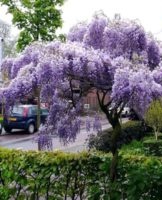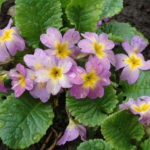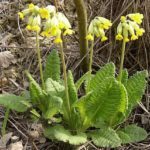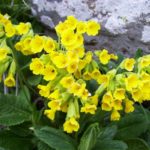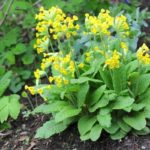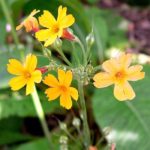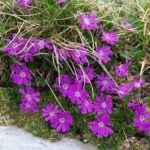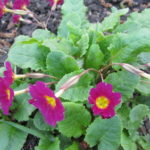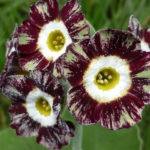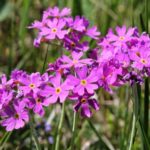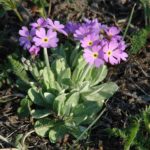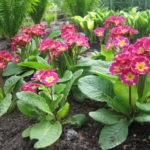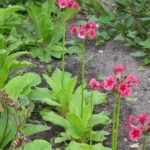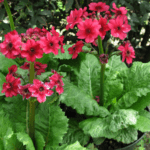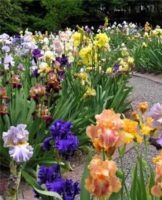Top 10 types of perennial primroses, planting and care in the open field
True spring comes with the flowering of primroses, these delicate and elegant flowers are grown as perennial crops. Planting a perennial primrose does not require special knowledge and skills from the grower; with minimal care, these plants decorate the site with a spectacular thick carpet. In total, there are about 500 types of crops, however, in the conditions of the domestic climate, no more than 70 are grown.
Description and characteristics of the plant
The perennial primrose belongs to the genus Primroses and the family of the same name. In nature, this primrose is found in Europe, Western and Central Asia, growing in both mountainous and lowland areas. Today, about 70 species are used in horticulture, most of which are intended for open-field cultivation.
Description of the primrose:
- Perennial herbaceous plant.
- The root is fibrous.
- Rosette of leaves at the base of the root.
- The surface of the leaf plates is smooth or wrinkled.
- The leaves are attached with petioles, but there are also sessile leaves.
- The flowers are collected in umbel or bell-shaped inflorescences.
- The color of the petals is one-color or two-color.
- The fruit is a capsule containing small brown seeds.
- The flowering period extends from the end of March to the beginning of June (depending on the variety).
In one place, perennial primrose grows up to 5 years with proper care. Propagated by seeds, cuttings and by division of the bush.
Varieties of flowers
Despite the many species of perennials, only a few have gained popularity in horticulture. This is due to their unpretentiousness to growing conditions and spectacular appearance.
Ordinary
Another name for this primrose is stemless, it is considered one of the most popular among flower growers. Its height does not exceed 20 cm. The flowering period begins in April. The leaf plates are rich green, have a corrugation on the top and an oval shape. The color of the flowers is different - from white to purple, their diameter varies from 2 to 4 cm.
Haller's Primrose
The slopes of the Carpathian Mountains and the Alps are considered the birthplace of Haller's primrose. There, the primrose chooses sunny areas with calcareous soil. The height of the plant is 10-30 cm. The color of the petals is light purple. The first flowers delight with their appearance, from the last days of April.
Spring
Spring, or medicinal, primrose is characterized by fragrant flowers of bright yellow color and low height. Buds are collected in inflorescences in umbels up to 15 cm in diameter.
Auriculate
This type of primrose belongs to conifers. The species itself has only one color - yellow, but hybrids are red, white and green. The height of the peduncles can reach 25 cm. The buds are collected in umbrella-shaped inflorescences.
Little
The smallest of the primroses, whose homeland is the Balkans and the Carpathians. The diameter of the pink-red flowers does not exceed 3 cm, in appearance they resemble small stars. The flowering period begins in mid-May.
Floury
Representatives of this species are the most short-lived, they are usually grown for 2 years, then the planting needs to be updated. The color palette ranges from white to reddish purple.
High
One of the tallest species of primroses - it grows up to 40 cm. The flowering period begins in April and lasts up to 45 days.
Inverted conical
This species of primrose has some of the largest flowers - up to 6 cm in diameter.
Malvopodobny
This type of primrose is very popular with gardeners for its decorative qualities. The flower reaches a height of 30 cm and is characterized by an abundance of buds.
Japanese
One of the last flowering species. The diameter of the buds can reach 2 cm. They are located on strong peduncles.
How to plant in the ground
To admire the carpet of blooming primroses, plants must be planted responsibly.
Time recommendations
It is possible to plant primroses in the open ground in spring and autumn, but it should be borne in mind that in the first case the flowers will appear next year.
Soil and seed preparation
For most varieties of primroses, it is advisable to choose a lightly shaded site, and only some species prefer sunlight throughout the day. Fertile loam is considered the best soil for primrose. A week before planting, the soil is dug up and crushed sphagnum and sand are added to it. If the soil is poor, manure is added.
Landing scheme
To get a flowering carpet, without holes and bald spots, planting schemes are followed. For small varieties, plants maintain a distance of 10-15 cm, for large - 20-30.

Features of growth through seedlings
To speed up the onset of flowering, gardeners often grow seedlings at home, then transfer them to flower beds. For sowing, containers or wooden boxes are selected. A drainage layer is necessarily laid on their bottom, followed by a mixture of sand and peat. After planting, the containers are covered with glass to speed up germination.
When several full leaves form on the seedlings, picking is carried out in individual buckets.
Rules of care
Agrotechnical care for primroses is not difficult, the main thing is to regularly moisturize the plants and add nutrients.
watering
Primrose is a moisture-loving plant and does not tolerate drying out of the soil. Irrigation is carried out twice a week in small portions, consuming 3 liters of liquid per square meter.
top dresser
Primroses are regularly fed with a weak solution of mineral fertilizers. Alternately use phosphorus and potassium once a week. It is undesirable to introduce nitrogen, otherwise the plant will grow leaves and flowering will be poor.
Wintering
Almost all varieties of primrose have high winter hardiness, so they do not need special shelter for the winter. The only thing you need to do is sprinkle a 10cm layer of organic mulch over the flowers.

Prevention of diseases and pests
As a prophylaxis against diseases and pests, plants are sprayed with "Fundazol" or copper oxychloride with the onset of spring. In the autumn, the treatment is repeated, but Nitrafen is already used.
After flowering
After the end of the flowering period, the soil around the primroses is loosened and weeds are selected. After that, the plants are left alone until winter, without cutting off the leaves that begin to grow, they will serve as a natural shelter from the cold. In the spring, the old leaf patches are removed.
Breeding methods
There are several easy ways to raise primroses in your garden.
Seminal
Only the material of the current year is used, the seeds of 2 years have a bad germination. They are sown in containers in an apartment, and seedlings are grown from them. With the onset of warm weather, seedlings are transferred to flower beds.
Electrical outlets
When 5-7 outlets are formed on the primrose, the division is carried out. Before starting work, the plants are properly watered so that it is easier to dig up the soil. Then they are carefully divided into several parts with their hands and seated.
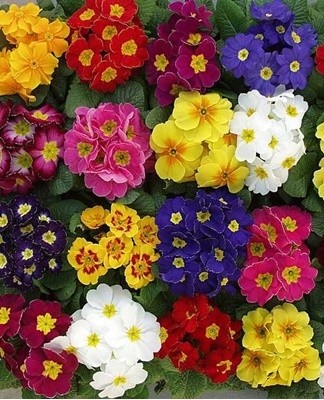
Leaves
When the flowering period begins, a leaf with a petiole is cut in the middle of the bush. It is dipped in filtered water when a rosette forms, planted in coarse sand and grown there.
Use in landscaping
All species of primroses look organic under tall bushes, forming a continuous flowering carpet. They create compositions with conifers, geykhers, hosts and decorative grain plants. Primroses are planted around gazebos or verandas, on alpine slides and in mixborders.




